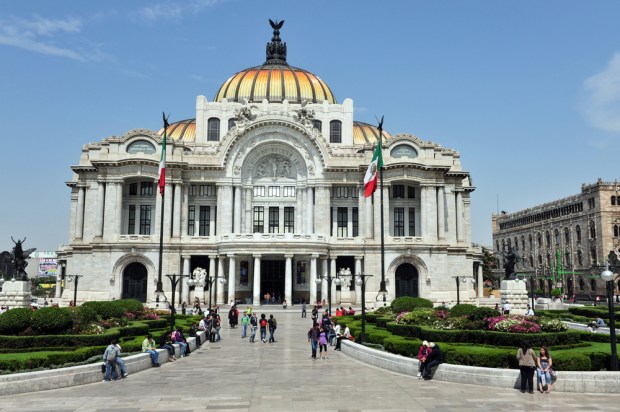FinTech Is Flourishing South Of The Border

Latin America is making big gains in the realm of payments, but Mexico may just be the region’s standout star. The country has gone through its fair share of hardships — drug wars, government corruption and unpunished crimes, to name a few — but the tech ecosystem is defying the odds.
In this week’s edition of PYMNTS’ Weekly Tech Center Roundup, we take a trip south of the border to explore the development of Mexico’s tech landscape and how it may actually be producing the next Silicon Valley.
Before we jump into the post, here are a few quick facts about Mexico and its tech scene:
- The country of Mexico has roughly 121 million people and is often referred as the “most populous country in LAT” due to its large population and economy.
- Mexico’s GDP is $1,144 billion, while the current GDP per capita is $9,517. Mexico has the 15th largest nominal GDP and the 11th largest by purchasing power parity.
- The capital city is Mexico City, which alone is home to almost 9 million.
- It’s projected that Mexico will represent the world’s fifth-largest economy by 2050.
- Nearly $120 million has been invested in approximately 300 startups based in Guadalajara since 2014.
- Mexico’s longstanding business culture resulted in the government investing $658 million to an estimated 620,000 entrepreneurs back in 2014.
A Fresh Start For Mexico City
The nation’s capital is also one of the world’s largest cities.
In recent years, the city has seen youthful and vibrant tech scenes develop across many of its neighborhoods. Though there’s been a boost to the number of tech startups, it’s been reported that the real sweet spot for Mexico City entrepreneurs is the financial services tech sector.
“Everyone is talking about FinTech,” René Lomelî, operations director for 500 Startups, told Mexico IT. The global accelerator has more than 40 Mexican startups in its portfolio, and Lomelî believes the capital will soon see its own tech explosion.
“There are a lot of things that are happening here,” Lomelî explained. “There are a lot of different players — entrepreneurs, VCs, angel investors. There is a ton of activity going on in Mexico City, and I believe that this year we are going to hear about companies doing great stuff.”
Mexico City is considered a focal point of the country’s entrepreneurship — the political capital, global financial center and cultural mecca has become a hotbed for tech growth.
“There’s a growing sense of opportunity,” Mak Gutiérrez, a local host of Hackers and Founders, told The Washington Post. “We’ve seen the snowball effect start. Before, founders were trying to fix problems for Mexico, not worldwide problems. I was really hesitant to where this was going. This new batch of entrepreneurs have been changing what we expect. There’s at least 10 startups that I think, in the next three to six months, are going to raise significant rounds.”
Delivering On IoT
Mexico City is on a mission to become a smart city.
Companies are teaming up to bring Internet of Things coverage to the capital city. The partnership between Sigfox, WND and IotNet Mexico will focus initially on delivering connected applications for utilities, such as remote metering for water, gas and residential electricity.
“As part of a group that is providing utility services to major Mexican companies and is deploying the first Metering-as-a-Service in the country, we made an extensive comparison of the available Low Power Wide Area (LPWA) and cellular technologies and concluded Sigfox was superior in simplicity, choice of hardware vendors and ecosystem support,” Daniel Guevara, CEO of IotNet Mexico, told Mobile World Live.
The Mobile Trailblazer
Mexico is on the path to become a mobile powerhouse, which says a lot since it has long been what TechCrunch described as a “telecom laggard.”
Just 20 years ago, only one out of 10 people in the country even owned a telephone of any kind, but today, that statistic has transformed to more than 100 million people having cell phones. According to the data, more than 70 percent of those are smartphones.
Mexico’s mobile industry has officially arrived.
With one of the largest global economies (and purchasing power to boot), millennials representing the country’s largest demographic group and increasing competition from smaller players, the country’s mobile landscape is ripe for innovation.
In an attempt to fight back against what the government considers a telecom and mobile monopoly, smaller competitors are looking to deliver new technologies and business models to the mobile market. On the flip side, larger players are also beginning to introduce more modern solutions to consumers to help them purchase and manage their mobile services.
From the second quarter of 2014 to the third quarter of 2015, Mexico’s smartphone penetration rose from 17.9 percent to 59.8 percent — that’s three times the number of smartphone users in little over a year.
It doesn’t hurt that more than half of Mexico’s online population is made up of millennials, who have increasing demand for smart devices and more engaging digital experiences.
It looks like Mexico’s tech players are rising to the challenge.
